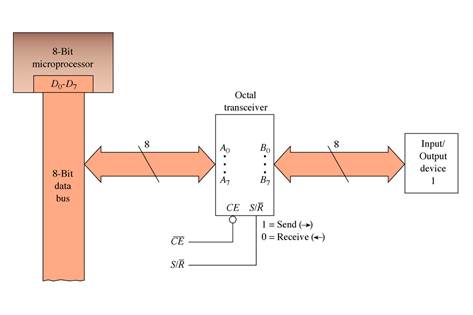Three-State Buffers, Latches, and Transceivers
- A group of flip-flops is called a register and function as a buffer, a latch or a transceiver.
- The three-state buffer can be used to interface several device outputs to one set of inputs.
- A buffer will pass a digital bit from it input to its output unchanged when the buffer is enabled.
- The 74LS244 is an octal (8) three-state buffer.
- A latch is a flip-flop that can be used to remember digital data.
- An 8-bit latch can be used to interface the output of a microprocessor to other devices.
- The 74LS373 octal latch and the 74LS374 octal D flip-flop are popular microprocessor interface chips.

- A transceiver is a bidirectional buffer.
- With a transceiver, a microprocessor can receive data from an I/O device or can send data out to an I/O device over the same set of common lines (data bus).
- The 74LS245 octal 3-state transceiver uses two 3-state buffers for each set of data lines.

return to top | previous page | next page

